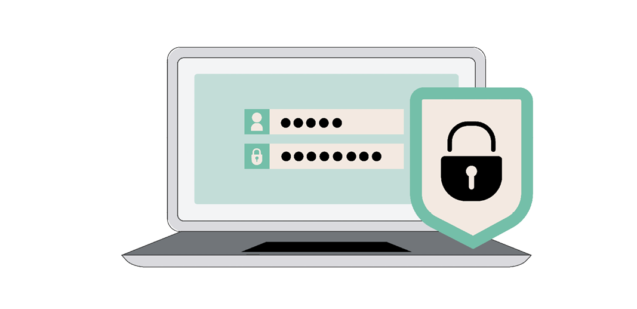Categories

Do you think that the easiest way to avoid a bad car loan is not getting a car loan in the first place? If so, you may be in the minority. When it comes to car buying, most American consumers think auto loans are the way to go — or at least that’s what the numbers suggest. According to recent reports, 85% of new car purchases and 53% of used car purchases rely on auto financing. While paying cash for a car is always the least expensive option in the long run, the price of a reliable vehicle often puts this option out of reach for the majority of car buyers.
With this in mind, many auto dealerships and financial institutions now offer flexible auto financing programs and consumer-friendly promotions that lower the up-front cost of a vehicle purchase and allow buyers to stretch their payments out over several years. However, this flexibility comes at a heavy price, and many car buyers discover too late that they’re trapped in a car loan they can’t really afford.
As new car prices and interest rates increase, so does the average monthly car payment, which now comes in at just over $500. This figure, while high, doesn’t necessarily indicate that car loans are a terrible idea. It just highlights the importance of doing your homework, finding a reliable car, and making sure your monthly payment fits your budget. Failure to do any of these steps can lead to an expensive mistake that leaves you scrambling to salvage your finances.
So, how can you avoid getting roped into a bad car loan? Or perhaps a little more importantly, how can you get out of one that you’re already in? Well, it helps to know what makes a bad car loan in the first place.
How to Spot a Bad Car Loan
We’ve all seen those “No Credit? Bad Credit? No Worries! Buy Here. Pay Here.” advertisements, haven’t we? While the term “bad car loan” might lead you to believe it’s all about predatory lending practices and subprime auto financing, there are actually two factors that can make a car loan bad.
The Loan Itself
A bad loan refers to a financing agreement you can’t afford or one that requires you to pay more than you should.
A Defective Car
The second variable that could create a bad car loan is, not surprisingly, a bad car. You may secure a stellar financing deal, but if the car you purchase isn’t reliable, you’re paying good money for a faulty vehicle. This also qualifies as a bad car loan.
So, how can you make sure you’re getting a good deal on a great car? You can start by learning how to spot bad loans and bad cars.
What makes a car loan bad?
To understand what qualifies as a bad car loan, it’s important to know the fundamental parts of a car loan—or any loan, for that matter. When you elect to finance a vehicle, you should pay attention to three key factors: the principal, the interest rate, and the loan term. For this article, we’ll stick to basic definitions of each.
Principal refers to the amount you will finance. For example, if you select a car that costs $20,000 and the dealer gives you $5,000 for your trade-in, you will finance $15,000 — this is your principal balance.
Interest is the money that a financial institution charges to lend you the money for your vehicle. To apply interest to the example above, a lender might charge an interest rate of 4.99% on the $15,000 principal that was borrowed. Depending on the loan term, the interest rate will determine the total amount you actually end up paying for your car.
Term refers to the length of time you are given to repay the principal balance plus the interest assessed. For our example, if the lender gives you a 48-month term, you will pay 4.99% interest on the principal balance of $15,000, which results in monthly payments of $345 and a total repayment of $16,578.
As we mentioned earlier, a bad car loan is one you can’t afford or that costs you more than it should. Is the car loan example we used above a bad car loan? That depends on your situation. If your budget doesn’t have room for a $345 monthly payment, yes, it’s a bad loan for you. If you have outstanding credit and could qualify for an interest rate that’s significantly lower than 4.99%, our example could be considered a bad car loan as well.
As you can see, there’s more to identifying a bad loan than just looking at the numbers.
Is your car the problem?
The vehicle you purchase is another variable that could determine whether your car loan is bad or not. While there are many mistakes to avoid when choosing the right car, several stand out because consumers make them most often. It only takes a little extra time to sidestep these errors, and the benefits are well worth the effort.
Don’t skip the CARFAX. If you’re purchasing a pre-owned vehicle, obtaining a vehicle history report is essential. Pulling from more than 100,000 vehicle data sources in the US and Canada, CARFAX provides consumer reports that provide a summary of red flags such as flood damage, salvage titles, altered odometer readings, and airbag deployments. Many dealerships supply these reports free of charge, but even if they don’t, paying for your own CARFAX report can save you from winding up with thousands of dollars in auto repair bills.
Drive it like you own it. After scrolling through thousands of vehicles online and browsing hundreds more on dealership lots, you’ve narrowed the choices down to a couple of finalists. How do you determine which one you want? With a test drive, of course. But before you take the car out for a spin, it’s important you test more than just the horsepower and the stereo. A thorough test drive can help you uncover everything from minor inconveniences to major performance issues. So yes, check out that 0-60 time and how the car hugs the turns, but be sure to see how it handles bumpy roads and quick stops as well.
Get an objective perspective. Since many auto dealerships have in-house service departments, it can be tempting to trust the car’s flashy window sticker that boasts a 100-point inspection. But if you’re buying a pre-owned car, it’s always a good idea to have the vehicle inspected by a third-party mechanic who doesn’t work for the dealership before you sign any financing paperwork. Most sellers understand that this step is part of the process, so they shouldn’t have a problem with it. If they resist, that can be a sign that you should keep shopping. By investing $100-$200 for a thorough inspection, you can either spot potential problems or confirm the quality of the car you’re purchasing. Either way, the peace of mind is worth the price.
How to Get Out of a Bad Car Loan
So far, we’ve looked at practical, proactive steps that can help you avoid getting caught in a bad car or a bad loan. But what if you’re already mired in the middle of a bad car loan? Is there any hope for improving your situation? Perhaps. Depending on the specifics of your situation, there may be some steps you can take to put yourself in a better position.
Is it time to drive a different car?
From time to time, despite your best efforts, you might find yourself with a car that’s not right for you. Maybe the car you loved at first isn’t fitting your lifestyle or meeting your needs. Or perhaps the vehicle turns out to be a mechanical money pit that leaves you with a towering stack of repair bills. Whatever the reason, you’re stuck with a car that’s not good for you or your finances. Here are a couple of ideas that might help.
Work a trade. If your car is in good condition but not a good fit for your transportation needs, you may be able to negotiate a trade-in. However, before you approach the dealership to discuss trading your current vehicle, it’s important to know the value of your trade-in. Car values depend on a variety of factors, so knowing what your trade-in is worth will help you gauge whether the dealer is offering you a fair price for your trade. The last thing you want to do is agree to a trade that puts you in a worse financial position.
Learn more about Lemon Laws. This option applies primarily to new cars. If you’ve purchased a new car from a dealer and find yourself making repeated trips to the mechanic, you may have a lemon on your hands. But just because your new ride has frustrating problems, it doesn’t automatically qualify as a lemon. According to the Center for Auto Safety, “A lemon is an (often new) vehicle that has manufacturing or design defects that may impact its safety or value and cannot reasonably be repaired by the manufacturer. The defect may be so great that the vehicle is unable to serve its intended purpose.” If you think your car qualifies as a lemon, research your state’s lemon laws and follow the prescribed course of action as required by the law.
Why not try to get a better car loan?
When it comes to the discussion of bad car loans, the loans themselves are often the most problematic aspect. Fortunately, they’re sometimes the easiest challenge to solve. To determine your options, you’ll need a solid understanding of your lending options as well as your personal finances. Do you have good credit? Is your income stable? Do you have a favorable debt-to-income ratio? Have you taken the time to develop a sensible budget? If you’re going to rework your auto loan, the lender is going to ask for those details, so you might as well gather them ahead of time.
Refinance your bad car loan. Did you finance your current vehicle during a time where poor credit or low income levels saddled you with less-than-favorable auto loan terms? Or did you get carried away on the showroom floor and opt for a high-interest loan at the dealership?
You may be paying more than you should each month. If you’ve been diligent about improving your credit rating since that time, you may qualify for a better interest rate that can save you thousands of dollars over the life of the loan. It’s certainly worth investigating. But before you contact your lender or another financial institution, use an online auto loan calculator to see if refinancing will actually save you money. If it looks like the savings will be substantial, check with your lender to see whether they offer refinancing options. It’s also smart to check with your credit union as well, since credit unions are often able to offer lower interest rates than traditional lenders. We offer money-saving options for our members, even if they’re seeking a bad credit car loan.
What’s the Worst Case Scenario?
Life doesn’t always go as planned. Maybe your loan wasn’t bad when you first purchased your car, but circumstances changed and now your financial arrangement is stretching your budget to its breaking point. If your credit has taken a hit or your income has dropped, you may not have the option to trade in your car or refinance your loan. At that point, you may need a Plan B. While the following options aren’t as favorable, they may help you avoid the negative impact of having a vehicle repossession on your credit.
Skip a monthly payment or two. While not all lenders offer them, many have financial hardship programs designed to help borrowers who have hit a rough patch. If you find yourself unable to keep up with your monthly payments, be proactive and make contact with your loan holder. If they offer the chance to defer or skip payments, you may be able to save up the money you would have spent to get your finances back on track. If you’re in a tight spot, it never hurts to ask.
Sell your car. Before resorting to this option, it is essential that you determine how much you still owe on your car. The last thing you want to do is sell it for less than you owe and still be responsible for making up the difference. With that being said, if you can sell your car for more than your remaining loan balance, this option can accomplish the goal of eliminating the financial responsibility to the lender. If you want to get the best price for your vehicle, selling it to a private party is the way to go. However, if you’re pressed for time and need to sell it quickly, Carmax offers a program where they will buy your car even if you’re not purchasing one from them.
Whether you need to refinance a bad car loan or discuss your current financial situation with a financial expert, Spero is here to help. Call us or visit one of our branches to speak with us today!



